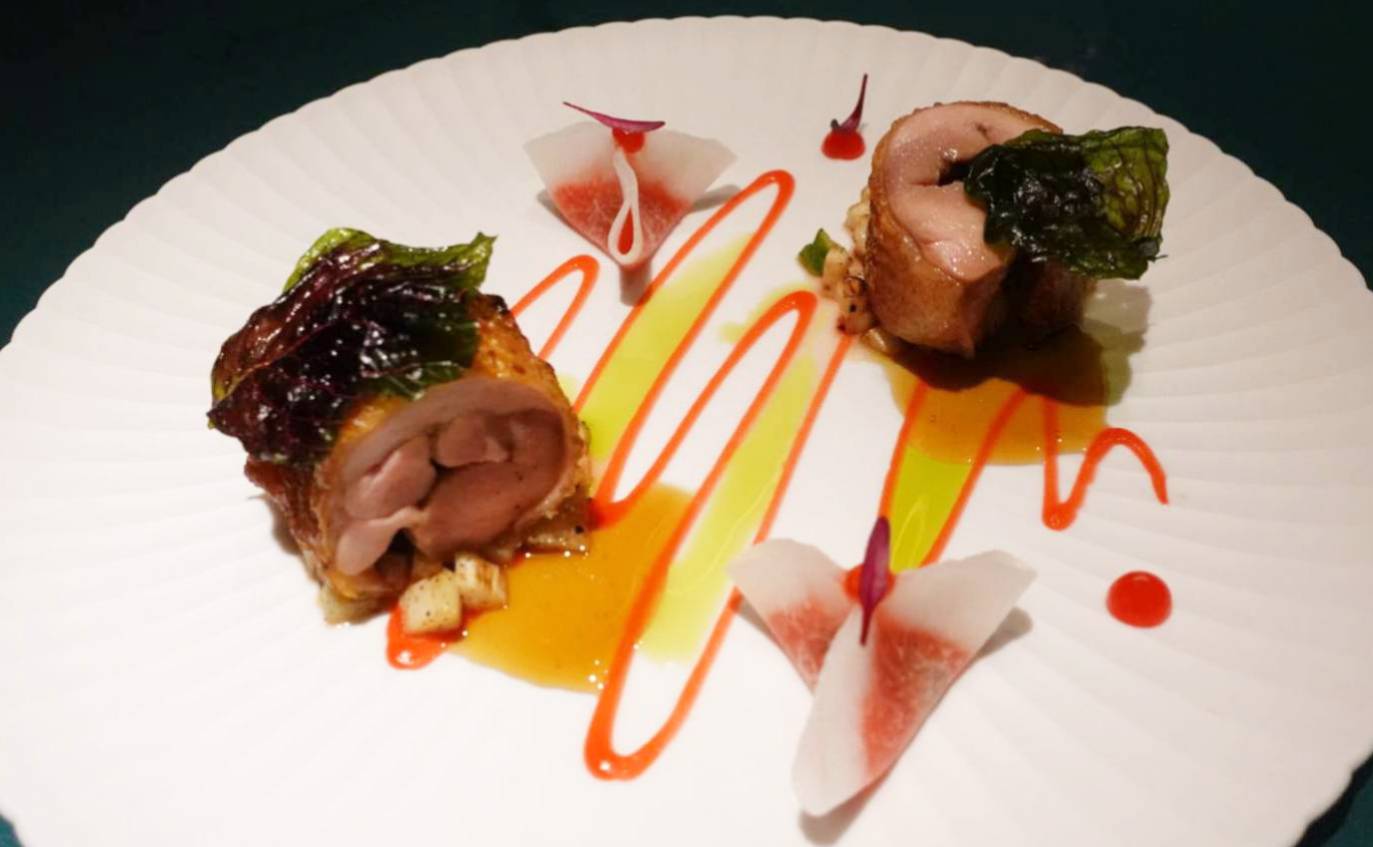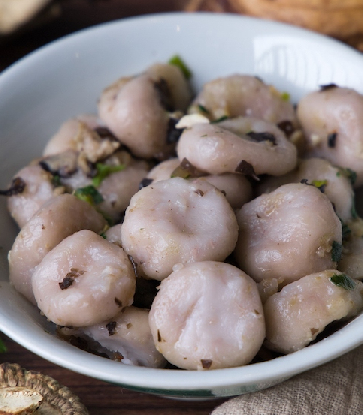Known for its distinctive aesthetics of old-time architecture, solid wood dining chairs, marble floors, and peacock green-hued décor, Taichung’s one-MICHELIN-Starred restaurant La Maison de Win captivates diners with a culinary concept that is no less unique. At the helm are John Chiang and Rory Lin, the former with a background in Cantonese cuisine, and the latter in French cuisine. By combining the flavours of contemporary Taiwanese fare with refined Western cooking techniques, the two co-head chefs offer diners innovative gastronomic experiences unlike any other. (Hero image: La Maison de Win)
Its extensive wine list and pairings are, no doubt, a highlight of the restaurant. Food and Beverage Director of La Maison de Win Xavier Tzeng honed his craft at renowned restaurants like The Landis Taipei and Taichung’s now-defunct Le Moût. With his extensive knowledge and experience in food and wine pairing, Tzeng has collaborated with the famed HiBoRu bar of Taipei to do wine pairings for La Maison de Win and its sister restaurant next door — FReNCHIE FReNCHIE — a MICHELIN-selected establishment. Together, the two restaurants and affiliated bar boast a collection of over a thousand different wines and 300 other types of wines and spirits.
Using three of the restaurant’s dishes, Tzeng shares how to pair whiskies with Taiwanese or Chinese cuisine. Possibly due to general dining habits, Tzeng, who has worked extensively with Western cuisines, admits that not many people speak of pairing spirits with Chinese cooking. However, he has discovered that since Asian dishes encompass a range of diverse flavours, when paired with wine, the sweetness of the dish often offsets the wine’s sweetness, or the dish’s acidity would clash with the tannins. However, when matched with spirits like whisky, which has a rich and smooth flavour profile with fewer sharp edges, there is greater room for flexibility and exploration.

These are Tzeng’s three key observations for pairing food and wine as a sommelier: first, the flavors of the dish must not conflict with the wine, so as an example, one would avoid pairing umami-driven dishes with heavily tannic wines; second, the aromas should complement each other; and last but not least, the weight of the dish must be considered. For instance, when it comes to fish, sashimi is considered light; steamed fish falls in the medium range, while braised or pan-fried fish is considered a heavy dish. The choice of wine for all these dishes should differ.
This is also a common challenge when pairing spirits like whiskies, as they are often more full-bodied. Tzeng suggests to lighten the body of the spirit by chilling the whisky or diluting it with water.
Once the weight of the spirit has been reduced, one can then consider selecting a suitable whisky based on its aroma. Tzeng points out that bourbon casks often produce light and delicate whiskies with hints of vanilla and butter, as well as floral and fruity notes, which work wonderfully with appetisers, salads, and steamed dishes. Sherry casks tend to impart deep notes of chocolate, spices, nuts, and caramel, making them an ideal match with main courses such as foie gras or rich stews. The third category consists of whiskies that have a unique flavour profile, such as peaty whiskies, which pair well with savoury and briny flavours like raw oysters; or smoky whiskies, which work well with other smoky dishes such as smoked salmon.

The first dish, Sausage Rice/ Salmon Roe/ Koshihikari, is a reinterpretation of the traditional winter delicacy of preserved meat with rice that is commonly enjoyed by the Cantonese. A bed of Taiwanese Taiken No.9 rice is topped with preserved sausages, liver sausages, and preserved pork. Diced and preserved liver sausages are mixed into the rice and then cooked over direct heat, allowing the flavours to seep into each grain. The sauce is made by stir-frying shallots and ginger with the leftover ends of the preserved sausages, liver sausages, and preserved pork; broth, soy sauce, and rock sugar are then added. To top it off, salmon roe marinated in huadiao wine can be found in the middle of the rice, adding a further touch of sweetness and umami to the dish. Chiang says, “I wanted to create a traditional dish of preserved meat and rice where the flavours of the ingredients are truly infused into each grain. The fluffy rice would have absorbed all the essence, yet the grains still maintain their structural integrity from being cooked over direct heat.” (Photo by Hsieh Ming-Ling)
With a dish that is packed with sweetness, pleasant unctuousness, and loud flavours, Tzeng suggests that a rich whisky finished in sherry casks or a peaty one would be an excellent match.

Next up is Kuei Ting Chicken/Pickled Peeled Chili/Grapefruit, crafted by marinating Kuei Ting chicken in a brine with spices before cooking it at a low temperature. The chicken is placed over Chinese spices and condiments including soy sauce, cinnamon, wujiapi (Slenderstyle Acanthopanax Bark), and star anise, which are accompanied by jicama with red chilies and red peppers fillings, water bamboo and diced asparagus stir-fried in chicken oil, as well as fried Okinawan spinach. The sauces are grapefruit gel and basil oil. “Compared to traditional soy sauce chicken, we have given the dish more tartness. Since soy sauce chicken itself has a very strong taste, we wanted to balance the flavours with the acidity of jicama and grapefruit, and the hot spiciness of the chilies,” Lin explains.
For this dish, Tzeng suggests pairing it with a light-bodied whisky matured in bourbon casks, which can complement the refreshing lightness of chicken and grapefruit.

Tzeng recommends bourbon whisky or a lighter-bodied whisky aged in sherry casks to go with this dish, which allows the lamb’s pure flavours and the gentle lamb broth to shine through.
“Whiskies may have a high alcohol content, but in fact, they have a warm and mellow style without overly pronounced personalities, which make them an excellent match with food,” Tzeng remarks.
Do not drink and drive. Excessive drinking is dangerous to your health.






















